Before we knew it - it was time for Kate and Jamie to head back to NYC and for us to move on to Marathon. Our first stop would be the Marathon Archaeological museum, a small museum on a flat plain in farming country about an hour outside Athens. There were a few stunning treasures here, such as the bronze statue of a boy from about 330 BC which had been pulled from the sea. There were also Roman era statues from a nearby cult shrine to Egyptian gods.
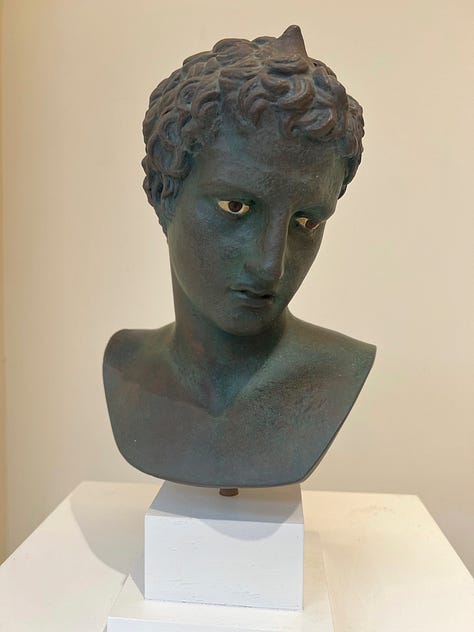
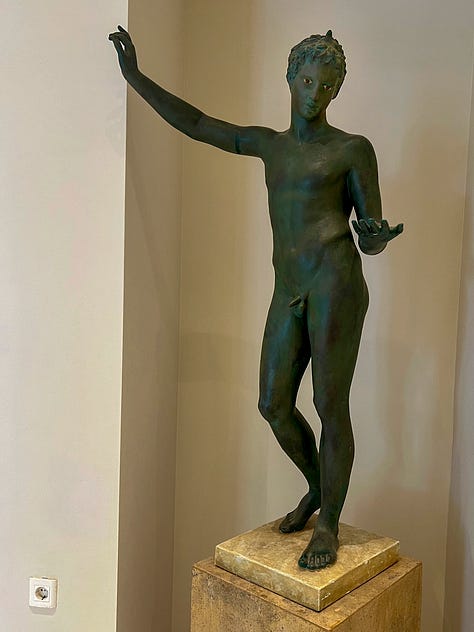
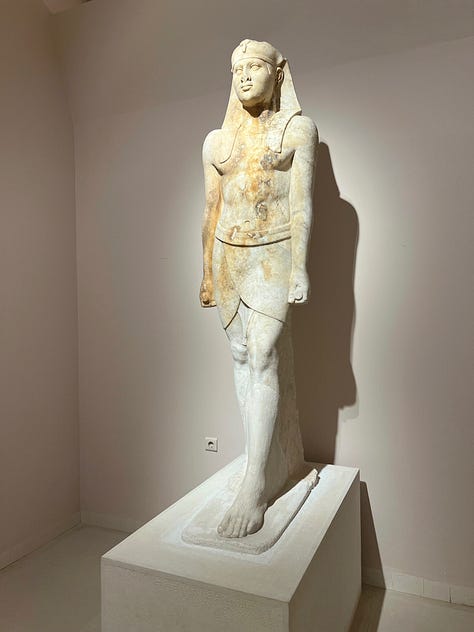
There was little in this museum about Battle of Marathon (490 BC). The battle of Marathon was fought between an enormous invading Persian army and a much smaller Athenian force. The Greeks were victorious at Marathon, defeating the force of a larger empire, driving them back to their ships in a rout before the Spartans arrived to assist them.
Herodotus wrote that before the battle Pheidippides, an Athenian, ran from Athens to Sparta (~149 miles) to ask for Spartan assistance in fighting the Persians. However the legend of the Marathon evolved to become that a runner was sent from the battlefield at Marathon to Athens to announce the Athenian victory. The distance from Marathon to Athens is ~26 miles and this became the basis of the modern Olympic marathon racing distance. The modern Athenian Marathon route circles around the Tumulus of the Athenians, a huge earthen mound where Athenian warriors lost during the battle were cremated and buried. Today the earthen tomb lies within a park in a residential neighborhood. At the time of the battle the tomb would have been closer to the sea. Over time the shoreline of the Bay of Marathon has advanced eastwards.
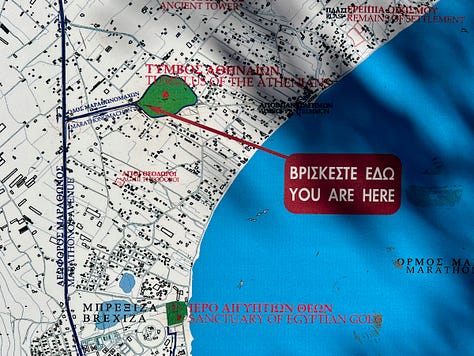
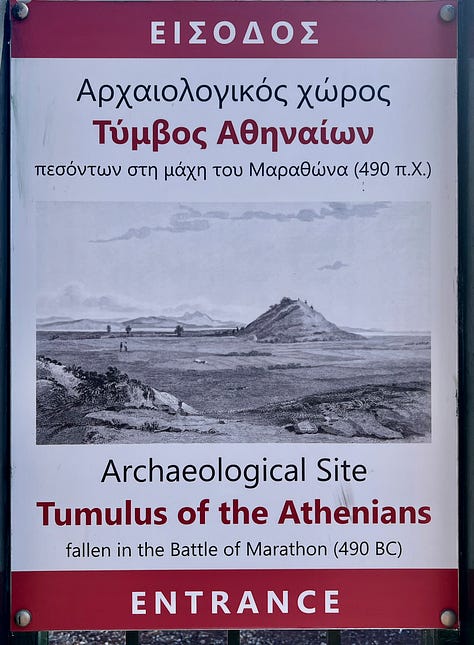

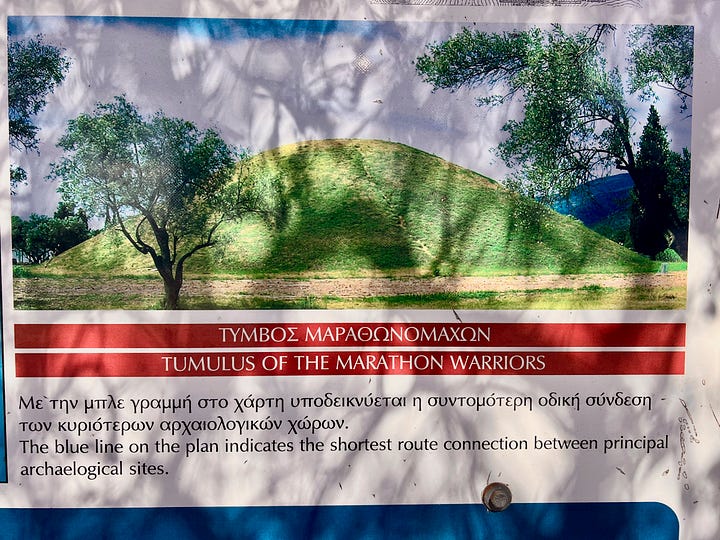

We also visited the nearby Rhamnous ruin1. This is one of the most beautifully situated classical ruins we’ve ever seen. The site consists of a 5th century BC shrine to Nemesis (of all Gods) at the top of the hill and a road, lined with tombs and sanctuaries that leads down to the fortified town of Rhamnous, established during the Peloponnesian War to guard this sea approach to Athens. Rhamnous overlooks the southern Euboean Gulf.
The shrine of Nemesis today is mostly a platform with a few broken columns and a view. In myth this sanctuary occupies the spot where the god Zeus (disguised as a swan) seduced or raped Nemesis, a goddess in goose form. In myth it seems these godly liaisons always seem to be productive. Nemesis produced a magic egg which contained Helen and the twins, Kastor and Pollux.
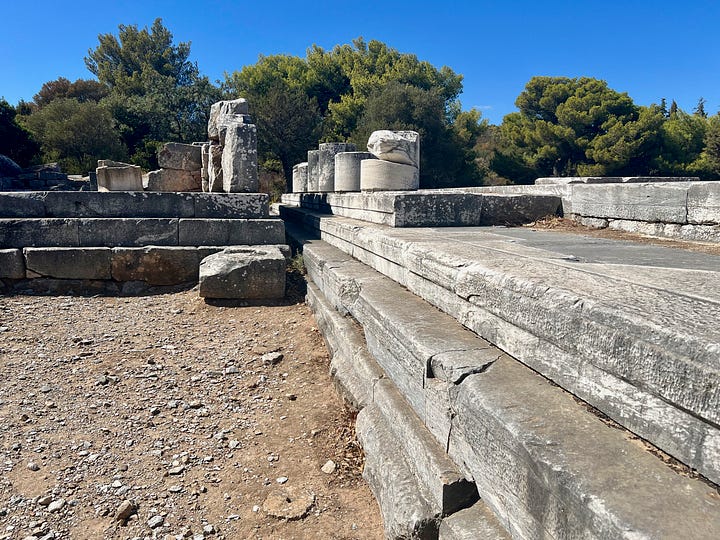
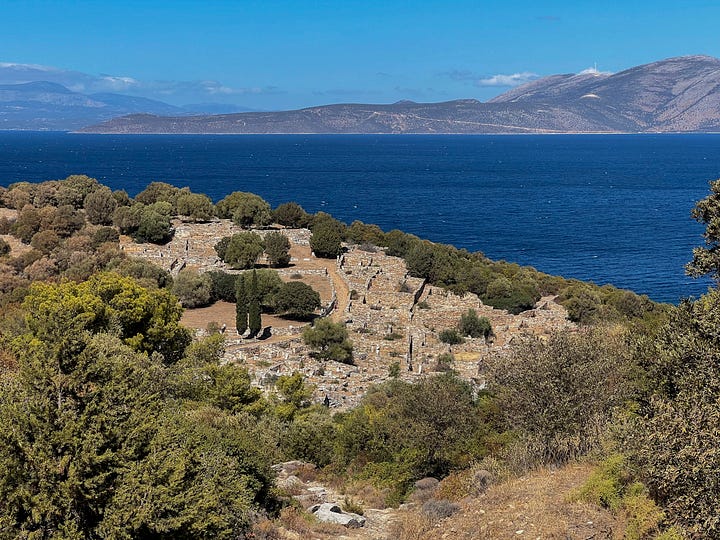
“… Nemesis was the embodiment of Retribution, that remorseless strand of cosmic justice that punished presumptious, overreaching ambition — the vice that Greeks call hubris. Nemesis has elements in common with the eastern idea of karma, and we use her today to suggest the fateful retributive opposition the lofty and wicked will one day meet and which will bring them down…2”
We saw perhaps some of that retribution as we climbed up the hills to the north on our way to the Pelion peninsula. The hills had been scorched and burned earlier in the summer by a vicious wind driven wild fire.
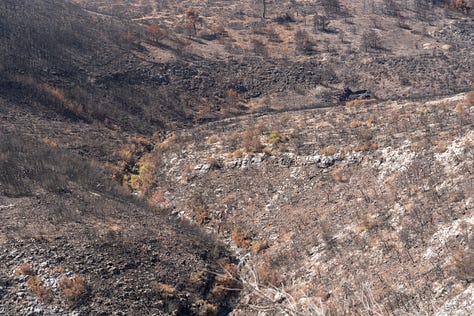
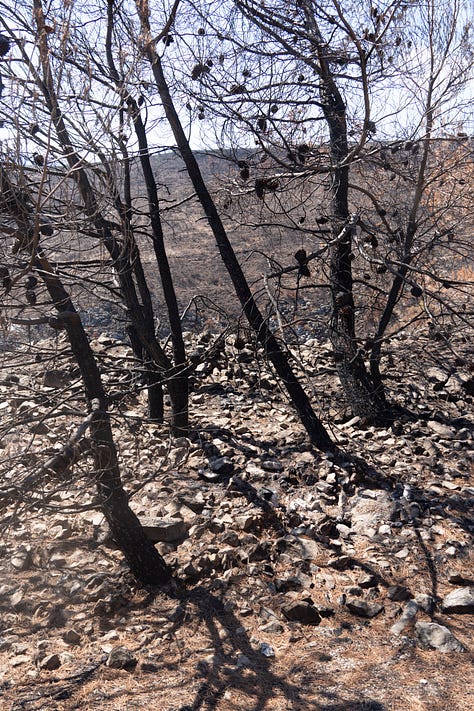
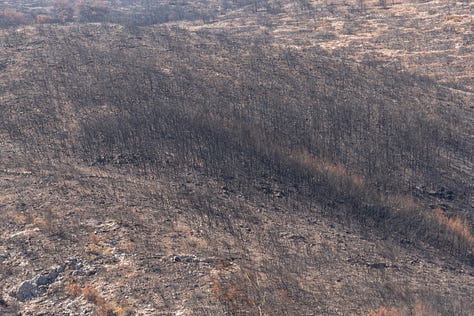
See ‘Ancient Greece: An Explorer’s Guide’ by Robert E Meagher & Elizabeth P Neave for more detail. Wonderful literate guide to many of the classic Greek sites.
Quoted from ‘Mythos’ by Stephen Fry, 2017, page 31. This retelling of the Greek myths is a highly recommended read.




